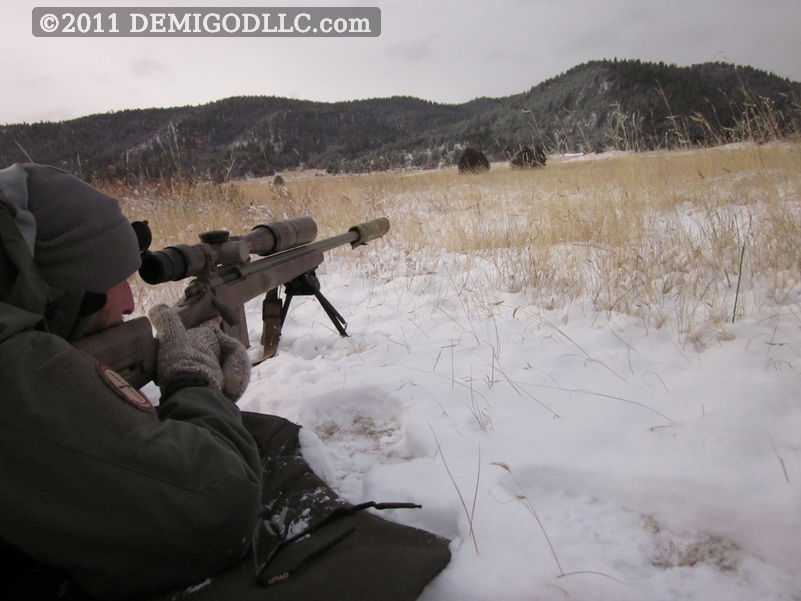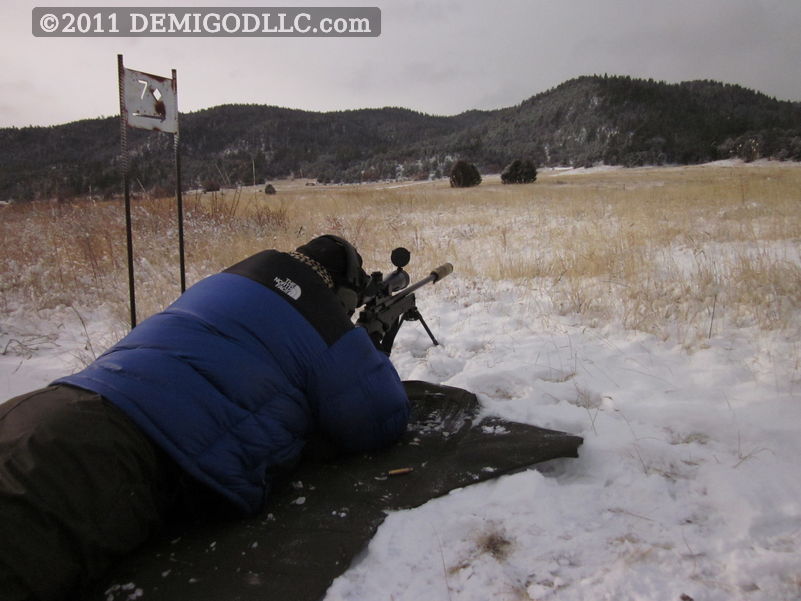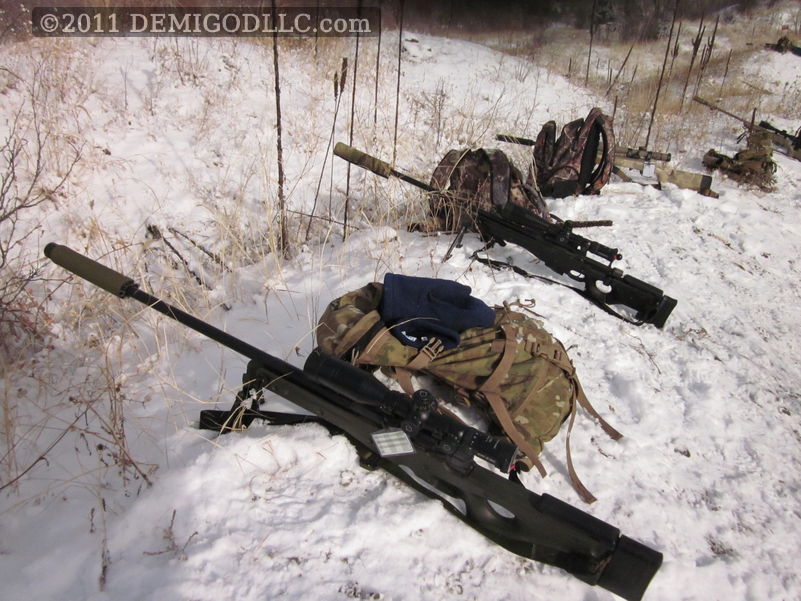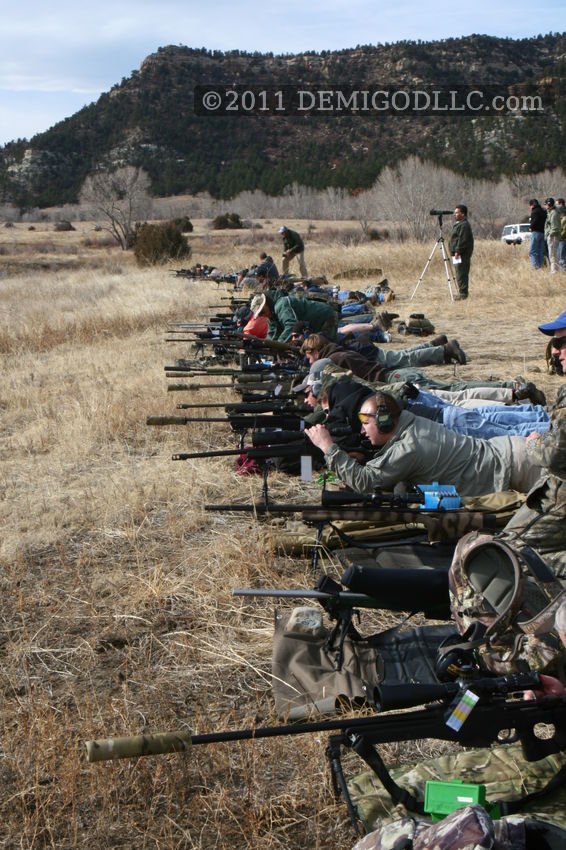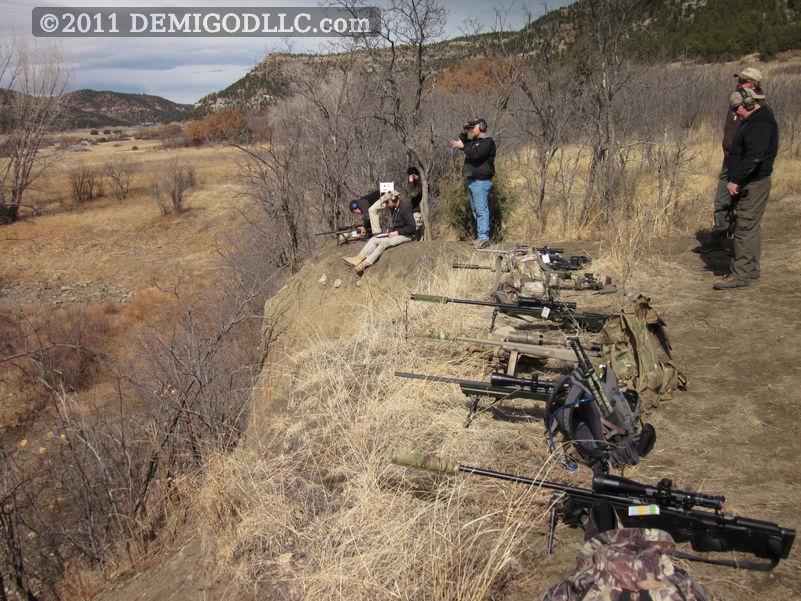Hi everyone,
This match was established in 2004 by Mike Kolar with the help of other local Colorado (mostly Denver-area) shooters who had an interest in field long-range shooting (lots of overlap with the 3-Gunners). My memory of the specifics is a little dim at this point, but I believe over a dozen shooters contributed money to fund the start-up costs (targets and stands) and about a half dozen were involved in physically setting up the course. Since there, there has been a cadre of 4-6 people who have been primarily responsible for making the match happen. This includes primarily Mike Kolar, M. Field, C. Ward, with others helping on and off. I was one of the original stake-holders and helpers (though in the last couple years my time to help has been somewhat limited by other commitments). I fund and run the match web site and have the majority of the media materials we've developed there (photos, references to match, etc).
The purpose for the match at the time it was developed was to provide another venue - one that was closer to Denver and potentially more sustainable - where we could practice field-style long-range shooting of the type characterized by the ITRC and the Blue Steel Ranch Steel Safari. It is not identical to those matches, but the idea was to develop a "local" monthly match with as many of the same challenges as were logistically practical. Some of the original "limiting" rules were due to selling it as a "hunting" match, which was a political necessity at the time due to NRAWC leadership.
The match is not an NRA concept, nor is it linked in any way to the NRA-HP "Sporting Rifle" class. Its name is completely due to the political issue I referred to above. The match staff completely runs the match and it has been 100% funded by its shooters. All the money that comes in goes to the NRAWC other than a small amount held back for target repair and replacement, and a small allotment for prizes.
The 2006 Practical Rifle Team Challenge (PRTC) match used the east half of the SRM course - with some modifications - as the longest stage of that match.
The SRM has a mostly constant set of stages, set in the field. We adjust stages to improve the match at the rate of about 1-2 stages changed per year. The match as it stands now is technically easier than it was in 2004-2005, when the majority of the shots could not be taken from the prone position. However, competition now is much more fierce.
The SRM is meant to be a "monthly" match, but due to conflicts with hunting season at NRAWC, it is currently held monthly February through September.
To answer the title question-- yes, there are a lot of people shooting this match. There is a constant contingent of Front Range shooters who come down to every match, and in the last couple years we have seen groups drive over from KS, TX, and OK. There are some WY and NM shooters as well. You'll find more of them posting about it over on SnipersHide. For example, this SH thread has been going on since 2006
http://www.snipershide.com/forum/ubbthreads.php?ubb=showflat&Number=695870&page=1
The SRM web site contains a lot of information, and if some information is not posted, it's probably because it's doesn't matter (in digital design, we call it a "don't care"). Target sizes are not specified because there are variety of target sizes and the information is not provided. It so happens that there are basically two sizes of targets,
1. approx 6" diameter circles, or diamonds with the same surface area
2. approx 10" diameter circles, or diamonds with the same surface area
There is one larger target at 875 yards. It is more like 14x18, or larger. I can't remember off the top of my head. It's pretty big. Definitely a reasonable size for that distance if you get the wind call right.
As far as equipment (including optics and rifle), the Sporting Rifle Match was one of the primary experiences - along with the ITRC, PRTC, and Steel Safari - I used to write the 3-article series on practical long-range rifle shooting.
http://demigodllc.com/articles/practical-long-range-rifle-shooting-equipment/ Actually, all the articles I've written about field long-range shooting are directly applicable to the SRM-- so my best advice is already detailed there.
There is nothing wrong with .243. Just remember you need to keep your muzzle velocity under 3200 fps. That rule is in place to limit damage to the steel targets.
What constitutes "small targets"?
One can conclude some things given that the target distance listed is approx 175 to 875 yards, and a rifle that will shoot at least 1 MOA. Based on the target sizes I listed above, it turns out to be approx 1.5-3 MOA, but munged a little bit based on the target shape (ie, diamonds are harder to hit than circles or squares).
ooking at was a 50mm scope as well. Difference between the two is 1" vs. 33mm tube and 20.5oz Zeiss vs. 22oz Leupold.
Pretty much totally wrong criteria to start looking at for a practical LR scope.
Is this to be off a bipod?
In general if something is not prohibited, it is allowed. In this case, a bipod is listed in the rules specifically to note that if you use one, you must use the same bipod the whole match.
Scores of first-time SRM shooters (with the contemporary course) have been in the single digits up to the high 50's. 60 is a perfect score and has never been shot.
PS- this should probably be moved to the competition forum.

